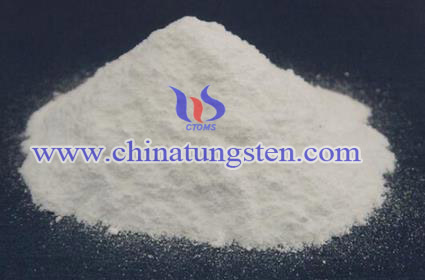Titanium Oxide-Tungsten Trioxide Preparation
- Details
- Category: Tungsten Information
- Published on Thursday, 07 January 2016 18:05
 Nowadays, it is universal for organic pollutants in the atmosphere or water, and the semiconductor TiO2 has catalysis and degradation of organic pollutants in the atmosphere or water, it is non-toxic, safe, cheap, abundant, etc., which leads its widely application. However, as a wide band gap semiconductor, TiO2 can only absorb sunlight accounts from 3% to 5% in the UV light, and thus a lower photocatalytic efficiency; what is more, since the photo-generated holes - electrons pair ,the quantum efficiency of TiO2 is very low. How can achieve the degradation of organic pollutants in water under visible light conditions?
Nowadays, it is universal for organic pollutants in the atmosphere or water, and the semiconductor TiO2 has catalysis and degradation of organic pollutants in the atmosphere or water, it is non-toxic, safe, cheap, abundant, etc., which leads its widely application. However, as a wide band gap semiconductor, TiO2 can only absorb sunlight accounts from 3% to 5% in the UV light, and thus a lower photocatalytic efficiency; what is more, since the photo-generated holes - electrons pair ,the quantum efficiency of TiO2 is very low. How can achieve the degradation of organic pollutants in water under visible light conditions?
To overcome these two shortcomings, we prepare a large specific surface area and high catalytic activity of TiO2 UV nanorods (TiO2-NRs)by taking the nanometer TiO2 as a precursor and by hydrothermal calcination; preparing calcined TiO2-NRs as the carrier at 400 ℃, using a sol - gel method when WO3 / TiO2-NRs composite photocatalyst, the results show WO3 loading of 2%, WO3 / TiO2-NRs photocatalytic activity under the same light conditions is 5 times of P25. The WO3-TiO2 samples were used rhodamine – dichloroph enoxyacetic acid decolorizing, the reaction solution was found to have a high-speed decolorization properties in solution.
Experiment Conclusion:
1. Mesoporous WO3 / TiO2 composites prepared by adoption of calcinations hydrothermal and sol - gel Preparation.
2. Tungsten trioxide titanium composites exhibit two-dimensional hexagonal symmetry p6mm pore structure and having anatase crystalline structure.
3. Titanium tungsten trioxide complex is narrower than pure titanium dioxide narrower bandgap.
4. Photocatalytic Performance 4.WO3 / TiO2 composites by a xenon light source (λ400 nm) irradiation to degrade organic pollutants in water, compared with pure TiO2, the photocatalytic activity of composite materials has been significantly improved.
| Tungsten Oxide Supplier: Chinatungsten Online www.tungsten-oxide.com | Tel.: 86 592 5129696; Fax: 86 592 5129797;Email:sales@chinatungsten.com |
| Tungsten News & Prices, 3G Version: http://3g.chinatungsten.com | Molybdenum News & Molybdenum Price: http://news.molybdenum.com.cn |



 sales@chinatungsten.com
sales@chinatungsten.com